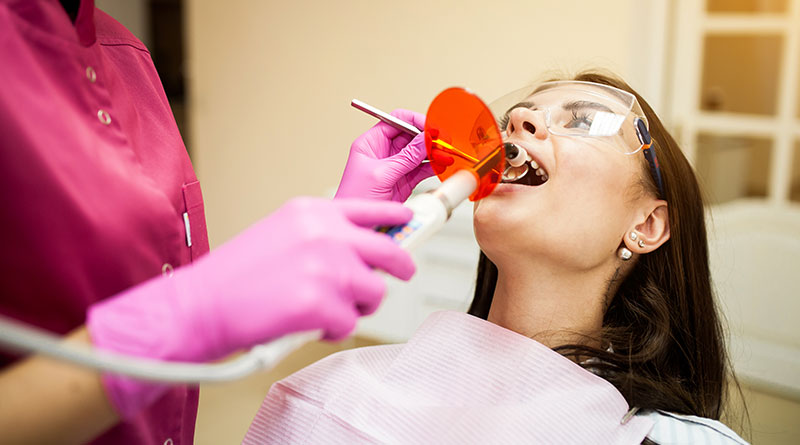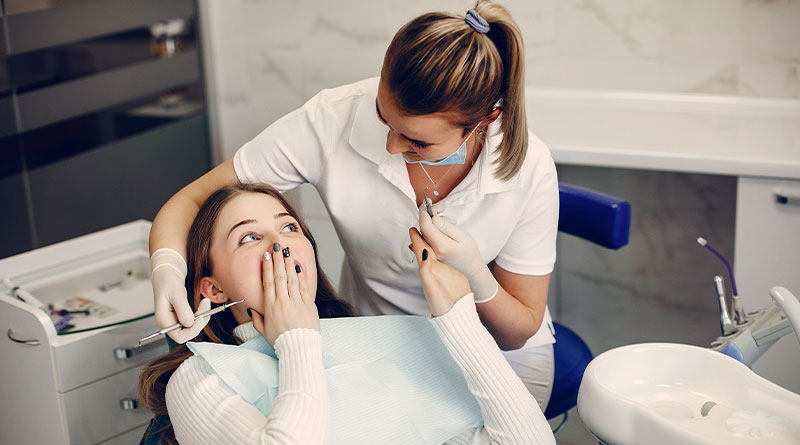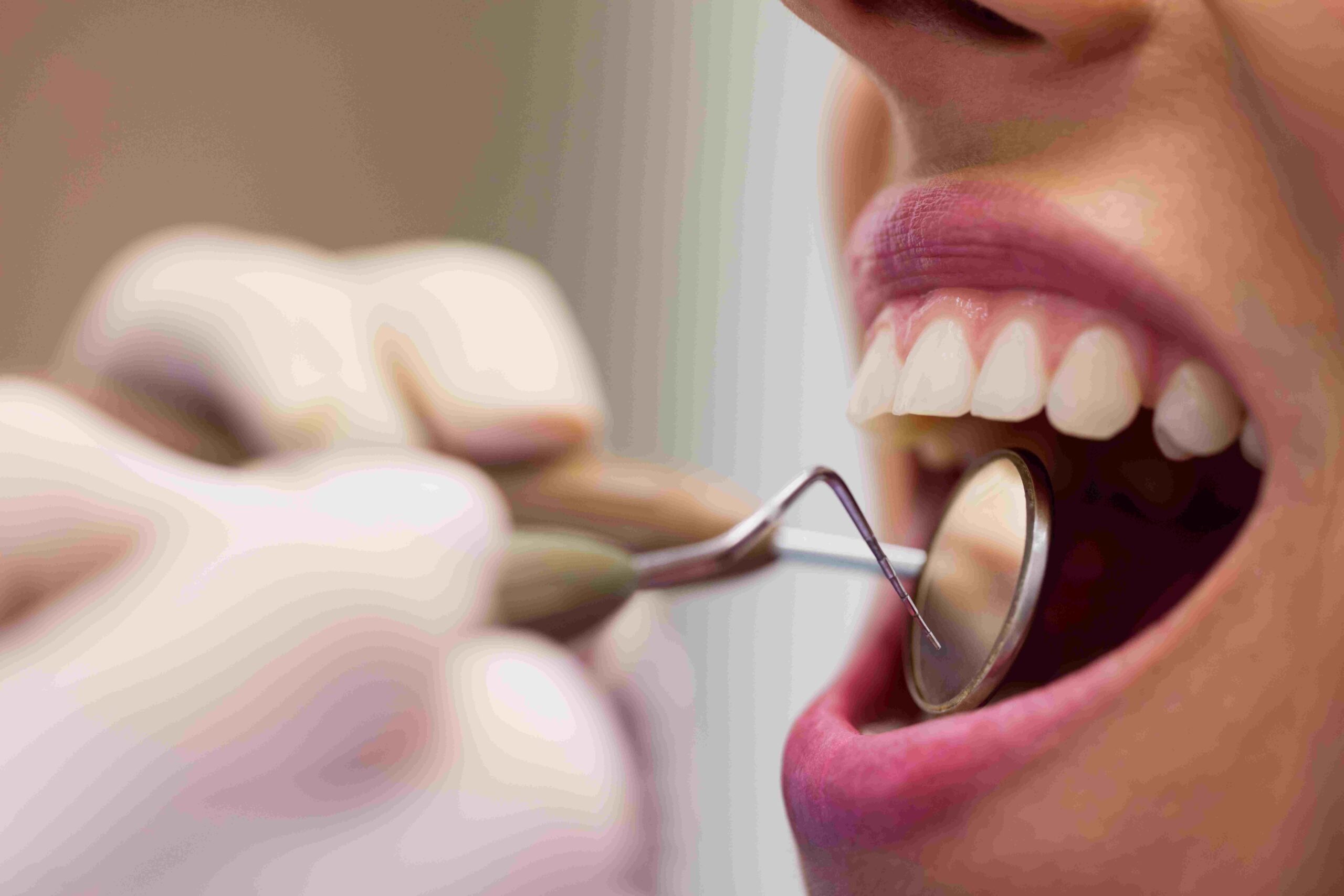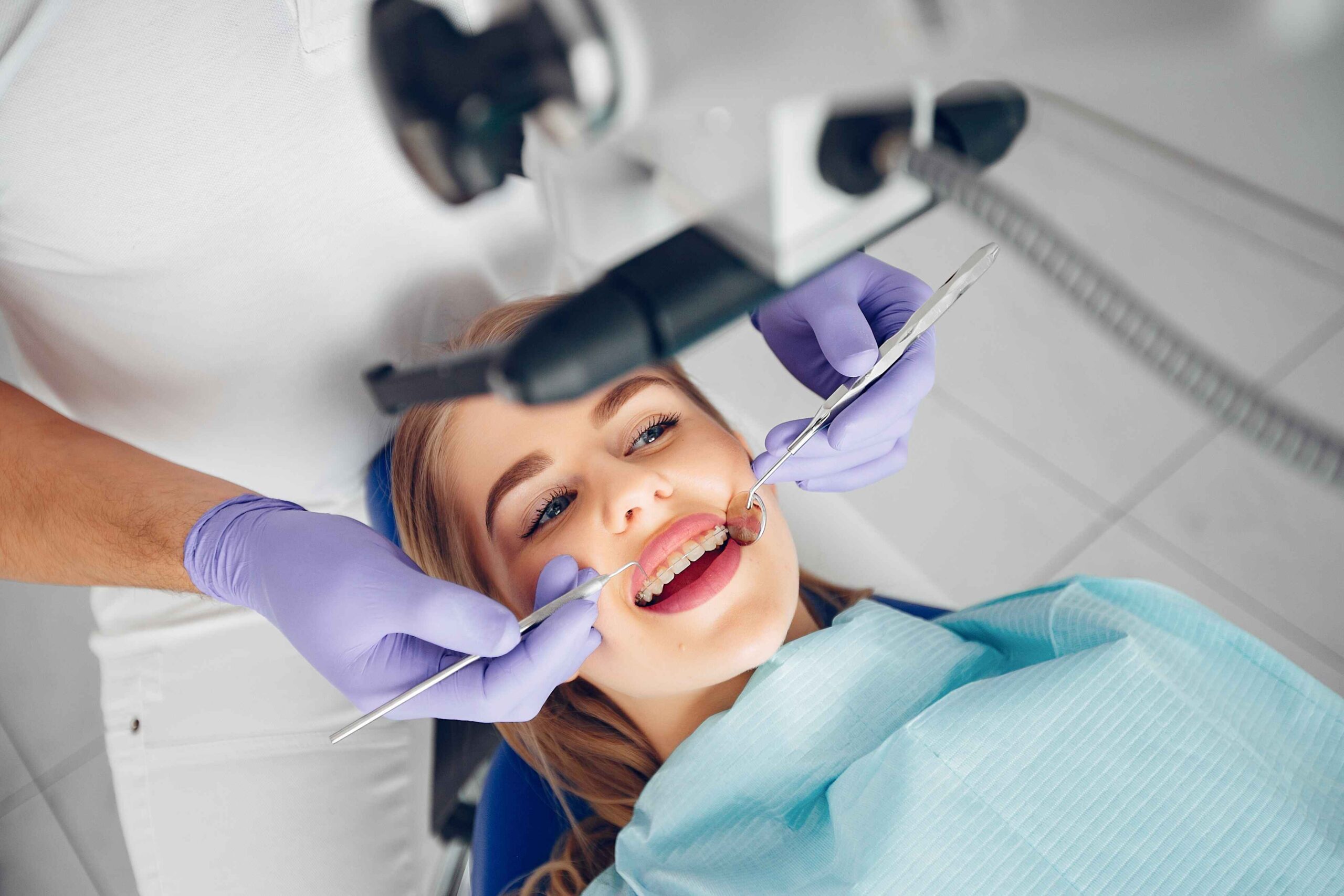Have you ever wondered why your pearly whites aren’t as bright as they used to be?
Teeth discoloration is a prevalent issue that impacts individuals across various age groups. From lifestyle choices to genetics, various factors contribute to the changing hues of our teeth.
In this blog, we’ll delve into the root causes of teeth discoloration, shedding light on the habits and conditions that might be dimming your smile.
Understanding Teeth Discoloration
Before we explore the causes, let’s understand the basics of teeth discoloration. Our teeth can change color due to both extrinsic (external) and intrinsic (internal) factors.
Extrinsic discoloration occurs on the surface of the teeth and is often caused by lifestyle choices, while intrinsic discoloration happens within the tooth, usually due to aging or certain medical conditions.
1. Poor Oral Hygiene
One of the primary culprits behind teeth discoloration is inadequate oral hygiene. Failing to brush and floss regularly allows plaque and tartar to accumulate on the teeth, leading to surface stains.
Over time, these stains can penetrate the enamel, causing more stubborn discoloration. To combat this, establish a solid oral hygiene routine, including brushing, flossing, and regular dental check-ups.
2. Coffee Conundrum
For many, a cup of coffee is an essential part of the morning routine. However, the dark pigments in coffee, along with its acidic nature, can contribute to teeth discoloration. The porous nature of tooth enamel allows these pigments to seep into the structure of the teeth, resulting in noticeable stains.
Consider reducing your coffee intake or drinking through a straw to minimize direct contact with your teeth.
3. Tobacco Taint
Not only does smoking present significant health risks, but it also adversely affects the appearance of your teeth. The tar and nicotine found in tobacco products can cause stubborn yellow and brown stains.
Additionally, smoking contributes to poor gum health, which can further exacerbate discoloration. Ceasing tobacco use not only promotes your general well-being but also contributes to sustaining a brighter, healthier smile.
4. Sugary Dilemma
Indulging in sugary treats doesn’t just impact your waistline; it can also affect the color of your teeth. Bacteria in the mouth metabolize sugars, generating acid that gradually wears away tooth enamel.
As the enamel weakens, the yellowish dentin beneath becomes more visible, leading to discoloration. Be mindful of your sugar intake and practice good oral hygiene to minimize the risks.
5. Aging Gracefully
As we age, our teeth naturally undergo intrinsic discoloration. The enamel thins, revealing more of the yellowish dentin. Additionally, the accumulation of a lifetime of surface stains contributes to a gradual change in tooth color.
While aging is inevitable, maintaining good oral hygiene and seeking professional teeth whitening options can help counteract the effects of time.
6. Medications and Discoloration
Certain medications, such as tetracycline antibiotics, antihistamines, and some antipsychotic drugs, can cause intrinsic teeth discoloration. While these medications are essential for treating various health conditions, their side effects may include staining or darkening of the teeth. If you’re concerned about medication-induced discoloration, consult your healthcare provider to explore alternative options or preventive measures.
7. Genetics and Environmental Factors
Sometimes, teeth discoloration is beyond our control and is influenced by genetics and environmental factors. Some individuals naturally have thinner enamel or a predisposition to certain types of stains. Environmental factors, such as high fluoride levels during tooth development, can also contribute to discoloration.
In such cases, professional teeth whitening or cosmetic dentistry procedures may be considered to enhance the aesthetic appearance of the teeth.
Brightening Your Smile: Prevention and Solutions
While some causes of teeth discoloration are unavoidable, there are steps you can take to prevent and address the issue:
- Limit the consumption of staining beverages like coffee and tea.
- Quit smoking to improve overall oral health and prevent tobacco-related stains.
- Watch your sugar intake and opt for a balanced, nutritious diet.
- Consider professional teeth whitening treatments for more stubborn stains.
FAQs About Teeth Discoloration
Q1: Can poor oral hygiene cause teeth discoloration?
Ans: Yes, poor oral hygiene is a significant contributor to teeth discoloration. When we neglect regular brushing and flossing, plaque and tartar accumulate on the teeth, leading to surface stains. Over time, these stains can penetrate the enamel, causing more stubborn discoloration.
Establishing a solid oral hygiene routine, including brushing, flossing, and regular dental check-ups, is crucial in preventing and addressing teeth discoloration.
Q2: How does smoking contribute to teeth discoloration, and can quitting reverse it?
Ans: Smoking introduces tar and nicotine to the oral environment, which can lead to yellow and brown stains on the teeth. Additionally, smoking is associated with poor gum health, further contributing to discoloration.
Quitting smoking can indeed make a significant difference. As you abstain from tobacco, your oral health improves, and with proper dental care, you may observe a reduction in teeth discoloration over time.
Q3: Is aging the only reason for intrinsic teeth discoloration?
Ans: While aging is a natural cause of intrinsic teeth discoloration, it’s not the only factor. Some medications, genetic predispositions, and environmental factors can also contribute to internal changes in tooth color.
Medications like tetracycline antibiotics and certain antihistamines can cause intrinsic staining. Genetic factors, such as thin enamel, and environmental influences, like high fluoride levels during tooth development, can also play a role.
Q4: Are over-the-counter teeth whitening products effective, or should I consult a dentist for professional treatment?
Ans: Over-the-counter teeth whitening products can be effective to some extent, especially for mild surface stains. However, they may not provide the same level of results as professional treatments offered by dentists.
Professional teeth whitening procedures, whether in-office or at-home kits provided by dentists, typically use higher concentrations of whitening agents, providing more noticeable and longer-lasting results.
Consulting with a dentist can help determine the most suitable whitening option based on your specific needs and the extent of discoloration.
Conclusion
Understanding the causes of teeth discoloration empowers individuals to make informed choices that contribute to a brighter, healthier smile. By adopting good oral hygiene practices, making lifestyle adjustments, and seeking professional dental care when needed, you can maintain a radiant smile that reflects both oral health and overall well-being.
Sahil Sachdeva is the Founder of curemedoc.com and a Digital Marketing professional with 6+ years of experience. If you need help in Content writing and want to increase your website ranking, connect with him, as he has some premium websites where you can share blogs with DoFollow links and increase your website’s ranking on Google.





